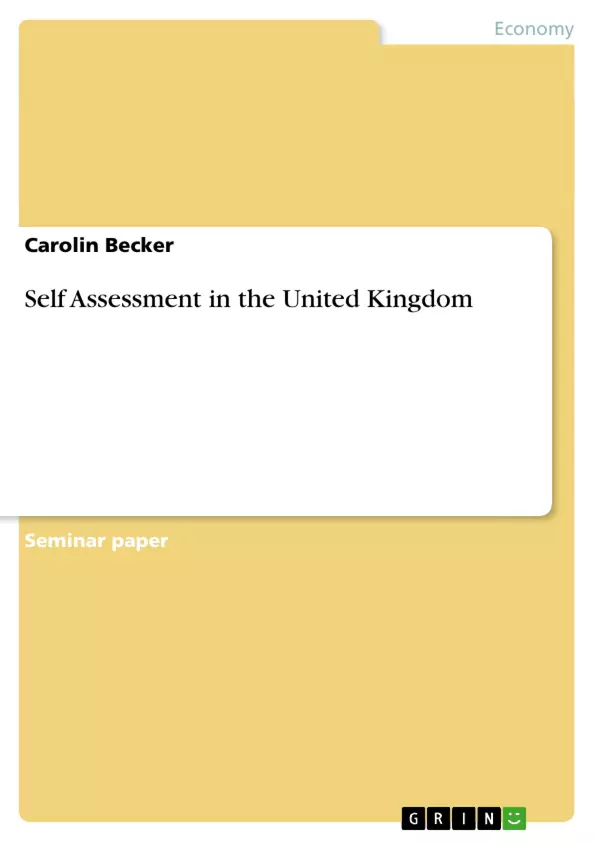Both Income Tax and VAT are self assessed taxes, but the regimes that govern then differ considerably. This assigment whats to compare and contrast the two taxation systems demonstrating clearly how each is administered and how the tax due is collected. “Self Assessment is a way of working out and paying tax.” (Inland Revenue, 2004a) Self Assessment is a tax system whereby tax payers are responsible for paying the correct amount of tax on set dates, without waiting for the Inland Revenue to demand this. The Self Assessment tax system is possible for Income Tax and Value Added Tax.
Inhaltsverzeichnis (Table of Contents)
- I. SELF ASSESSMENT
- a. Income Tax Self Assessment
- b. Value Added Tax Self Assessment
- II. THE REVENUES PROCEDURES
- a. Penalties for late submitted or late payments of income return
- b. Penalties for late submitted or late payments of VAT return
- III. DOES THE SELF ASSESSMENT TAX SYSTEM SIMPLIFY THE PROCEDURE FOR THE TAX PAYERS?
Zielsetzung und Themenschwerpunkte (Objectives and Key Themes)
This assignment aims to compare and contrast the Income Tax and Value Added Tax (VAT) self-assessment systems in the United Kingdom, highlighting their administration and tax collection mechanisms.
- Self-Assessment in Income Tax and VAT
- Taxpayer Responsibilities and Obligations
- Administration and Collection of Taxes
- Penalties for Late Submissions and Payments
- The Impact of Self-Assessment on Taxpayers
Zusammenfassung der Kapitel (Chapter Summaries)
The assignment explores the principles of self-assessment in both Income Tax and VAT, examining the differences in their respective regimes.
The Income Tax Self-Assessment section delves into the UK's self-assessment system, outlining the responsibilities of taxpayers, particularly self-employed individuals and company directors. It discusses the process of advance payments, deadlines for payment, and the calculation of tax liabilities. The section also addresses the 'Pay As You Earn' (PAYE) system and its role in income tax collection.
The Value Added Tax Self-Assessment section focuses on VAT registration requirements, outlining the criteria for businesses to register for VAT. It explains the process of submitting VAT returns, including the declaration of charged and reclaimed VAT, as well as the quarterly and annual reporting obligations. The chapter also discusses the significance of VAT as a tax on consumer expenditure and the mechanics of input and output tax.
Schlüsselwörter (Keywords)
The key concepts explored in this assignment include Income Tax, Value Added Tax (VAT), self-assessment, tax liabilities, advance payments, deadlines, penalties, PAYE, VAT registration, VAT returns, input tax, output tax, and the impact of these systems on taxpayers.
- Quote paper
- Carolin Becker (Author), 2005, Self Assessment in the United Kingdom, Munich, GRIN Verlag, https://www.grin.com/document/37095



